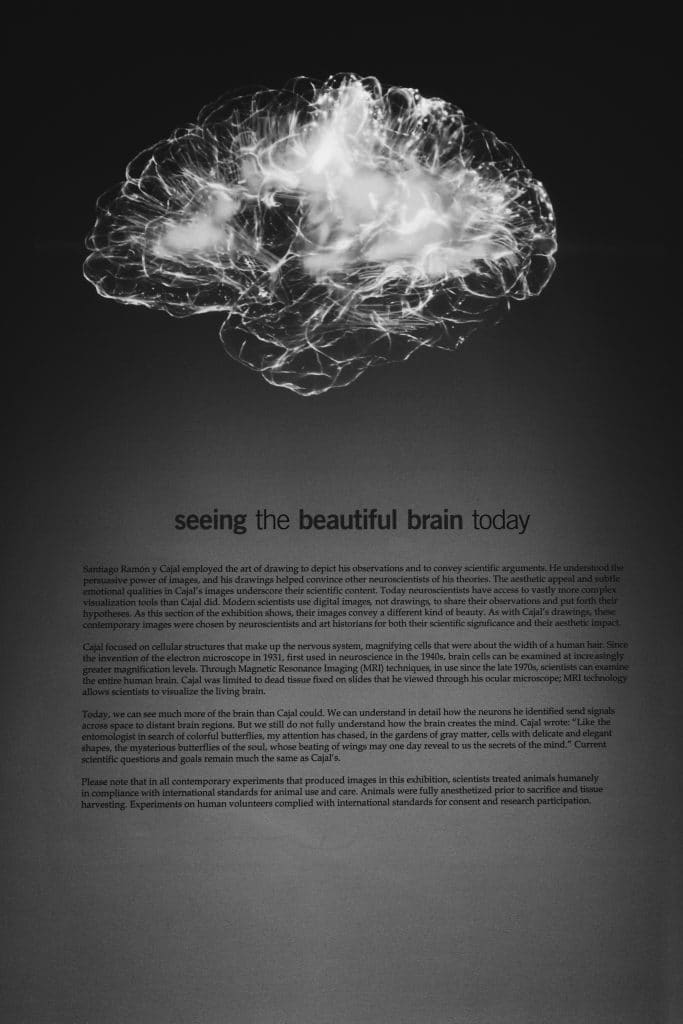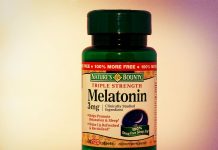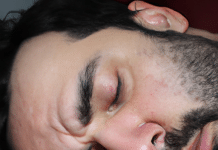Ever wondered about the mysterious world of dreams and what causes them to be so vivid or even lucid? Join us as we explore the intriguing phenomenon behind our nocturnal adventures. From the fascinating science behind the brain’s activity during sleep to the potential psychological factors influencing dream intensity, we’ll uncover the secrets behind this captivating realm of the subconscious mind. So, fasten your seatbelts and prepare to embark on an enlightening journey into the depths of our dreamscapes.
This image is property of images.unsplash.com.
Review contents
Neurological Factors
Vivid or lucid dreams are often a result of various neurological factors. These factors play a crucial role in shaping the content and intensity of our dreams.
Activation of the Prefrontal Cortex
One key neurological factor that contributes to vivid or lucid dreaming is the activation of the prefrontal cortex. This is the part of the brain responsible for higher cognitive functions such as decision-making, logic, and self-awareness. During lucid dreaming, the prefrontal cortex becomes more active, allowing individuals to have a heightened sense of self-awareness and control within their dreams. This increased brain activity in the prefrontal cortex may be linked to the ability to recognize and manipulate the dream environment.
Increased Dopamine Levels
Another neurological factor that influences vivid or lucid dreaming is the level of dopamine in the brain. Dopamine is a neurotransmitter that plays a role in various functions, including mood, motivation, and reward. Research suggests that increased dopamine levels can enhance dream intensity and the individual’s ability to remember and control their dreams. This neurotransmitter may contribute to the vividness and clarity experienced during lucid dreams.
Sensory and Motor Cortex Activity
The sensory and motor cortex are also involved in the occurrence of vivid or lucid dreams. These areas of the brain are responsible for processing sensory information and controlling voluntary movements. During the dream state, these regions of the brain exhibit activation, creating a simulated experience of sensory perception and motor control. This activation contributes to the immersive nature of dreams, allowing individuals to feel and interact with their dream environment as if it were real.
Sleep Stages
Understanding the different stages of sleep is crucial in comprehending the occurrence of vivid or lucid dreams. Dreams predominantly occur during the Rapid Eye Movement (REM) stage and the non-REM sleep stages.
REM Sleep
REM sleep is characterized by rapid eye movements, increased brain activity, and vivid dreaming. This stage of sleep is when most memorable and emotionally intense dreams occur. During REM sleep, the brain’s activity resembles that of wakefulness, and the body undergoes muscle paralysis to prevent physical movements that may occur within the dream. It is thought that the combination of heightened brain activity and muscle paralysis during REM sleep contributes to the vividness and realism of dreams.
Non-REM Sleep
In contrast to REM sleep, dreaming during non-REM sleep is typically less vivid and memorable. This stage of sleep is characterized by slower brain activity and deeper sleep. Dreams that occur during non-REM sleep are often more fragmented and abstract, lacking the vivid sensory details and narrative consistency of REM sleep dreams. However, it is important to note that vivid or lucid dreams can still occur during non-REM sleep, albeit less frequently.
Mental Health and Emotional State
Our mental health and emotional state can significantly influence the occurrence of vivid or lucid dreams. Specific mental health conditions and emotional states have been found to have a significant impact.
Anxiety and Stress
Anxiety and stress can frequently lead to heightened dreaming experiences. During periods of increased stress and anxiety, individuals may find their dreams becoming more vivid and emotionally charged. The content of these dreams may reflect the worries and concerns that individuals experience while awake. This connection between anxiety, stress, and vivid dreaming likely arises from the brain’s response to heightened emotional arousal.
Depression
Depression has also been linked to changes in dreaming patterns. Individuals with depression often report experiencing more vivid and negative dreams. These dreams may reflect the emotional struggles and feelings of sadness associated with depression. Additionally, depression can disrupt the normal sleep cycle, potentially leading to more frequent awakenings during REM sleep, which may enhance dream recall.
Post-Traumatic Stress Disorder
Post-Traumatic Stress Disorder (PTSD) can have a profound impact on dreaming. Individuals with PTSD often experience recurrent and distressing nightmares related to their traumatic experiences. These nightmares can be incredibly vivid and emotionally intense, significantly impacting sleep quality and overall well-being. The presence of nightmares in individuals with PTSD underscores the strong link between traumatic experiences and the content of dreams.
Creative and Imaginative Individuals
People who are naturally creative or imaginative may have a greater propensity for vivid or lucid dreaming. The ability to think outside the box and create rich mental imagery may contribute to more elaborate dream experiences. These individuals may find themselves engaged in fantastical or surreal dream scenarios that mirror their creative inclinations in waking life.
Medications and Substances
Certain medications and substances can influence the occurrence of vivid or lucid dreams. These substances can either enhance or suppress dream intensity and recall.
Antidepressants
Some antidepressant medications, such as selective serotonin reuptake inhibitors (SSRIs), have been associated with changes in dreaming patterns. While SSRIs may reduce dream recall and intensity for some individuals, others may experience vivid dreams as a side effect of these medications. The precise mechanisms by which antidepressants affect dreaming are not yet fully understood, but they likely involve alterations in neurotransmitter activity in the brain.
Nicotine Withdrawal
People who are trying to quit smoking may experience vivid dreams as a result of nicotine withdrawal. Nicotine, a stimulant found in cigarettes, can suppress REM sleep, leading to a decrease in dream recall. When individuals stop smoking, their brain chemistry adjusts, and REM sleep rebounds. As a result, there is usually an increase in dream intensity and recall during the initial stages of nicotine withdrawal.
Alcohol and Drug Withdrawal
Alcohol and certain drugs can also impact dreaming. Chronic alcohol use can interfere with REM sleep, leading to a reduction in dream recall. However, when alcohol is removed from the equation, REM sleep rebounds, and individuals may experience rebound vivid dreams. Similarly, certain drugs, such as marijuana or psychedelics, can result in more intense and hallucinatory dreams during periods of acute or prolonged use.
This image is property of images.unsplash.com.
Sleep Disorders
Several sleep disorders can contribute to the occurrence of vivid or lucid dreams. These disorders disrupt the normal sleep cycle and often lead to altered dreaming experiences.
Narcolepsy
Narcolepsy is a neurological disorder characterized by excessive daytime sleepiness and sudden episodes of sleep. Individuals with narcolepsy may experience vivid and often bizarre dreams during daytime napping or during unexpected sleep attacks. These dreams can be emotionally intense and may occur at the onset of sleep, blurring the boundaries between wakefulness and dreaming.
Sleep Apnea
Sleep apnea, a disorder marked by repeated interruptions in breathing during sleep, can lead to fragmented sleep and changes in dreaming patterns. Sleep apnea disrupts the normal sleep cycle, particularly REM sleep, which is essential for dreaming. As a result, individuals with sleep apnea may experience alterations in dream intensity and recall.
Insomnia
Insomnia, characterized by difficulty falling asleep or staying asleep, can also influence dreaming experiences. Sleep fragmentation and decreased overall sleep duration associated with insomnia can impact the frequency and depth of dreams. Individuals with insomnia may report having more fragmented and less vivid dreams due to the disturbances in their sleep architecture.
Restless Legs Syndrome
Restless Legs Syndrome (RLS) is a neurological disorder characterized by an irresistible urge to move the legs, often accompanied by uncomfortable sensations. RLS can disrupt sleep continuity and decrease sleep quality, potentially affecting dream recall and intensity. Individuals with RLS may experience a decrease in the frequency of vivid dreams due to the sleep disturbances caused by the disorder.
External Stimuli
The sleeping environment and external stimuli can also influence the occurrence of vivid or lucid dreams. Factors such as the sleeping environment, noise, and light can impact the overall quality of sleep and dream experiences.
Sleeping Environment
Creating a comfortable and conducive sleeping environment can promote vivid and uninterrupted sleep. Factors such as temperature, bedding, and comfort play a role in achieving optimal sleep conditions. A comfortable sleeping environment can minimize disturbances during sleep, leading to more prolonged periods of uninterrupted REM sleep, essential for dream generation.
Noise and Light
Noise and light can significantly impact the quality of sleep and dream recall. Excessive noise levels, such as traffic sounds or loud music, can disrupt sleep continuity and decrease dream recall. Similarly, exposure to bright lights, particularly blue light emitted by electronic devices, can suppress the production of melatonin, a hormone crucial for regulating sleep-wake cycles. Minimizing noise and light disturbances in the sleeping environment can help create a conducive atmosphere for vivid and uninterrupted dreaming.
This image is property of images.unsplash.com.
Lucid Dreaming Techniques
Lucid dreaming techniques can be employed to increase the likelihood of experiencing vivid or lucid dreams. These techniques involve training the mind to recognize the dream state and gain control within the dream.
Reality Testing
Reality testing involves performing regular checks throughout the day to determine whether one is dreaming or awake. This practice helps train the mind to question the reality of everyday experiences, ultimately leading to increased self-awareness within dreams. By integrating reality testing into daily routines, individuals may carry this habit into their dreams, allowing for a greater likelihood of recognizing and controlling the dream environment.
Mnemonic Induction of Lucid Dreams (MILD)
Mnemonic Induction of Lucid Dreams (MILD) is a technique that involves setting a strong intention to remember and recognize dreams while falling asleep. Before sleep, individuals repeat a phrase, such as “I will remember that I am dreaming” or “I will have a lucid dream tonight.” By priming the mind with this intention, individuals increase the chances of achieving lucidity within their dreams.
Wake-Back-to-Bed (WBTB) Method
The Wake-Back-to-Bed (WBTB) method involves waking up during the night after approximately five to six hours of sleep, staying awake for a short period, and then returning to sleep. This technique capitalizes on the fact that REM sleep and vivid dreams are more likely to occur in the latter portion of the night. By temporarily interrupting sleep and then resuming it, individuals increase their chances of experiencing lucid dreams during subsequent periods of REM sleep.
Dream Induction Devices
Advancements in technology have led to the development of various devices designed to induce and enhance the experience of vivid or lucid dreams.
Lucid Dream Masks
Lucid dream masks are wearable devices that detect when an individual enters the REM stage of sleep based on eye movements. Once detected, the mask emits a series of light and sound cues to prompt the individual within their dream, signaling that they are dreaming. With repeated use, these masks can help train the mind to become more aware within dreams, leading to increased lucidity.
Electroencephalogram (EEG) Headbands
EEG headbands are another type of device used to induce lucid dreams. These headbands measure brainwave activity during sleep, specifically targeting the periods associated with REM sleep. When the headband detects this phase, it utilizes vibrations or audio cues to prompt the individual within their dream, helping them achieve lucidity. EEG headbands offer a non-invasive and user-friendly approach to enhancing the potential for vivid and lucid dreaming.
Dream Journaling and Recall
Keeping a dream journal and practicing recall techniques can significantly enhance the frequency and detail of dream recall. By actively reflecting on and recording dreams upon awakening, individuals can train their minds to remember and recognize dream content more consistently.
Increased Dream Recall
Dream journaling involves recording dreams in a journal immediately upon waking up. This practice helps solidify dream memories and develops a habit of recalling dreams. Over time, individuals who consistently engage in dream journaling can experience a significant increase in dream recall. The act of writing down dreams improves the connection between conscious waking life and the dream world, fostering improved dream recall.
Improved Dream Awareness
Practicing recall techniques, such as mentally replaying dreams and reflecting on dream symbols and themes throughout the day, can improve overall dream awareness. By actively engaging with dreams during waking hours, individuals cultivate a heightened sense of self-awareness within dreams. This enhanced dream awareness promotes the ability to recognize when one is dreaming, leading to an increased potential for lucidity and greater control over dream experiences.
Individual Variations and Personal Factors
While the factors discussed above contribute to vivid or lucid dreaming, individual variations and personal factors can influence the occurrence and intensity of dreams.
Age
Dreaming experiences can vary across different stages of life. For example, children and adolescents often report more fantastical and magical dreams, while older adults may experience more realistic and mundane dreams. Changes in dream content and recall can be attributed to factors such as neurobiological development, hormonal changes, and life experiences associated with different age groups.
Gender
Gender differences may also influence dream experiences. Research suggests that women tend to have more emotional dreams, while men tend to experience more aggressive and intense dreams. These differences may be influenced by hormonal fluctuations and socialization patterns related to gender.
Personality Traits
Certain personality traits can influence the frequency and intensity of dream experiences. For instance, individuals who are open to new experiences may have more vivid and complex dreams compared to those who are more closed off. Similarly, individuals who are naturally empathetic and emotionally sensitive may have dreams that reflect their heightened emotional awareness.
Creativity
Creative individuals often report having more vivid and imaginative dreams. The ability to think outside the box and generate novel ideas may extend to the dream world, resulting in more elaborate and visually stunning dream scenarios. Creative individuals may find their dreams to be a source of inspiration and a rich landscape for exploring their creative potential.
In conclusion, the occurrence of vivid or lucid dreams can be influenced by a combination of neurological factors, sleep stages, mental health and emotional state, medications and substances, sleep disorders, external stimuli, lucid dreaming techniques, dream induction devices, dream journaling and recall practices, as well as individual variations and personal factors. Understanding these factors can shed light on the fascinating and complex nature of our dreaming experiences. By exploring and harnessing the mechanisms behind vivid and lucid dreaming, individuals can gain greater insight into their own subconscious mind and explore the limitless possibilities within their dreams.
































